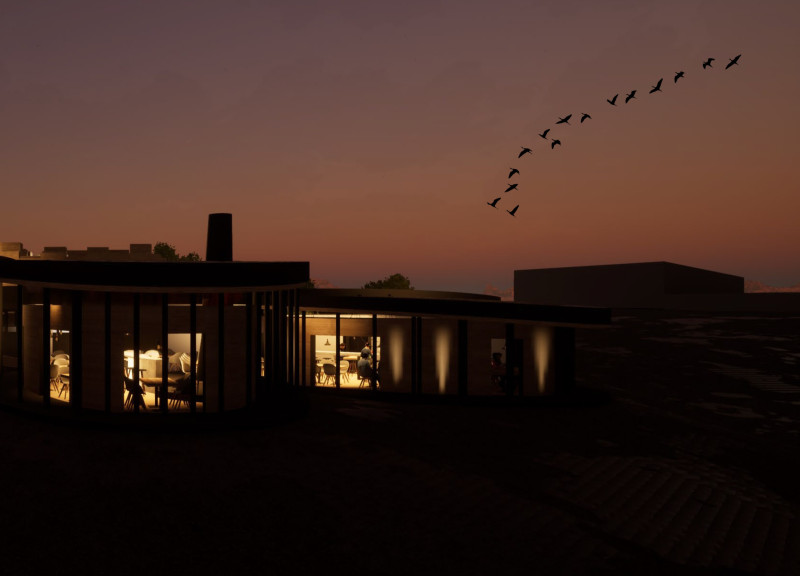5 key facts about this project
The restaurant is situated within a volcanic landscape, drawing inspiration from the Holtasóley flower, which symbolizes resilience. The design concept emphasizes harmony with the environment while serving as a functional space for dining. The layout prioritizes accessibility and inclusivity, creating a flow that allows guests to explore various areas of the restaurant with ease.
Functional Spaces
At the core of the design is the kitchen, which serves as the central hub from which all other spaces radiate. The restaurant includes two dining areas that can seat 54 and 46 patrons, respectively, along with a bar and a greenhouse vegetable garden. This greenhouse not only provides fresh ingredients but also reflects a commitment to sustainable practices. Adjacent to these areas, a contemplation garden offers a peaceful retreat, enhancing the dining experience.
Sustainability Features
Sustainability is a significant focus throughout the design. Solar panels are positioned to capture energy efficiently, while natural ventilation systems promote better air quality inside the restaurant. A rainwater collection system is in place to support the greenhouse's irrigation needs, creating a sustainable loop with the local environment. Additionally, a pumped water system nourishes the vegetable trays, reinforcing the importance of resource management.
Accessibility and Movement
The design emphasizes movement by opting for ramps instead of stairs, ensuring that the space is easily navigable for all visitors. This choice promotes an interactive experience, allowing guests to flow freely between dining areas, the greenhouse, and the contemplation garden. The layout fosters a connection with the landscape, encouraging exploration and engagement with the surrounding environment.
The design highlights the relationship between culinary practices and environmental awareness. Natural light streams into the restaurant, blending indoor and outdoor elements. Views of the volcanic scenery enhance the atmosphere, creating a calming environment that reflects the character of the landscape.






















































